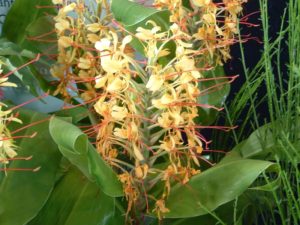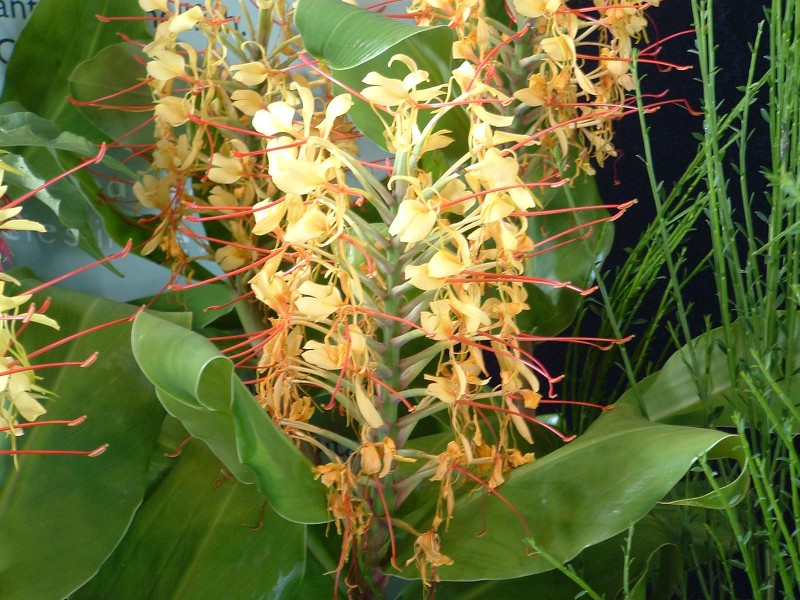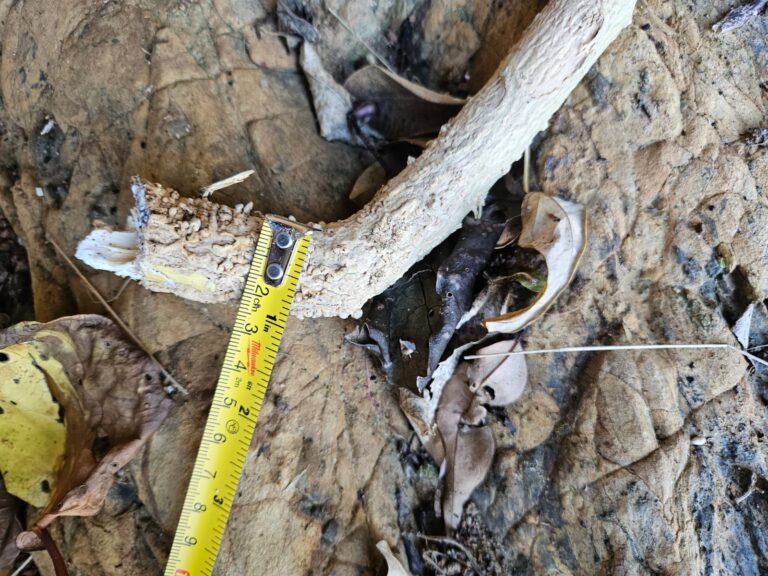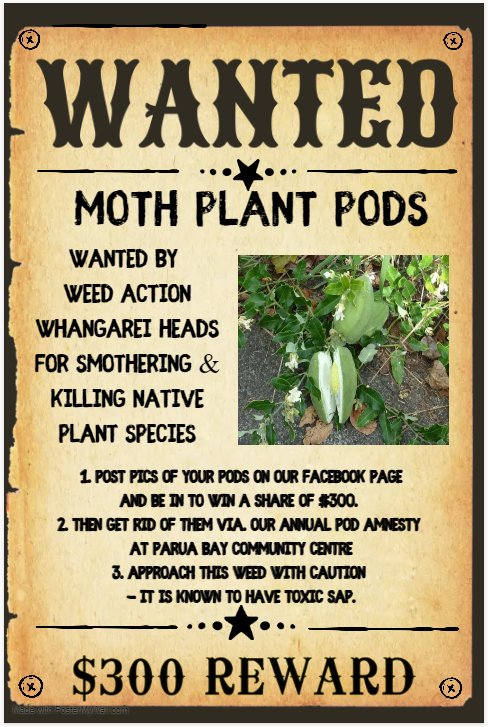 Hedychium gardnerianum
Hedychium gardnerianum
Just want to know how to kill it?
Skip to control methods
Also known as
kahili ginger, ginger lily
What does it look like?
Non-woody perennial with soft erect stems, growing up to 2m tall, with a short pinkish ‘collar’ at the base. Forms deep beds of dense, many-branched taro-like rhizomes (rhizome beds can be up to 1m deep). Large wax-covered, lance-shaped leaves arise direct from the unbranched stems, alternate arrangement. Produces flower spikes (25cm – 45cm) with fragrant lemon-yellow flowers (Feb-Apr) with conspicuous red stamens, which . develop into a fruiting spikes with fleshy orange fruits (15-20 mm long), containing many bright scarlet seeds. Under full light conditions up to 100 seeds produced per flowerhead.
Why is it a problem
Wild ginger is shade tolerant, long-lived and fast growing. Eventually replaces all other species as nothing can grow up through the dense mats of tubers it creates, and the dense leaves block light and smother native plants preventing regeneration. The rhizome beds , while they can be deep themselves, are shallow rooted, so when they become heavy with rain they can slip on steep sites and stream banks, causing erosion. Spread easily from birds eating the seeds, and by fragments of rhizome which can survive immersion in the sea, crushing, and years away from soil.
Sets more seed in open light-filled areas, but also readily grows under forest canopy, where it expands outward, eventually opening up the canopy above it. Large risk in lowland broadleaf & kauri forest.
How does it spread?
Seeds are spread by birds and possibly possums. Rhizomes spread slowly outward from clumps, and new plants are established from rhizome fragments spread in dumped vegetation and fill, and by soil movement, flooding, and contaminated machinery.
How much of it do we have on the Whangarei Heads Peninsula?
Wild ginger is increasingly common in Whangarei Heads. The area around Taurikura ridge, Mt Manaia and Mt Aubrey are a particular hotspot, but it is a problem all over the Heads. However, for the most part we do not yet have the extensive fields of wild ginger seen further north, but will do if we don’t act to control wild ginger now.
What can we DO about it at Whangarei Heads?
Fortunately, it is reasonably straight forward to control, and it can be done very successfully with minimal herbicide use. The initial priority would usually be to control the sites in the open to reduce seeding, and then tackle sites in the bush. The higher volume of seed from sites in the open and its dispersal by birds means that controlling that piece in your own backyard is more important than you think.
Seeds are relatively short lived – approximately 6 years, meaning it is possible to eliminate this plant from a site relatively quickly.
Check out the control methods below:
How do I control it?
Special disposal notes: Rhizomes extremly hardy. For manual control methods dispose of rhizomes in landfill, or by drying out and burning. Stems can be composted.
- Slash stems. Remove any seed heads and destroy. Dig out all rhizomes and take to land fill. It is also possible to mulch with a lawnmower (not a mulcher) and compost. Young seedlings can be hand pulled and crushed, taking care to remove any strings of rhizomes.
- Cut above the pink “collar” at the base of the stems & immediately treat stump with (1g metsulfuron/1L water). Picloram gel can be used on smaller plants, but is less effective than metsulfuron.
- Spray dense patches away from roots of vulnerable species, spring – late autumn (5g metsulfuron + 10ml penetrant/10L water). Don’t replant sprayed sites for 6 months/until seedlings appear naturally.
Seeds are relatively short lived – approximately 6 years, meaning it is possible to eliminate this plant from a site relatively quickly; Maintain a rolling front. Check and treat area every two years before seed set (May). Don’t replant sprayed sites for 6 months/ until seedlings appear naturally.
CAUTION: when using any herbicide or pesticide PLEASE READ THE LABEL THOROUGHLY to ensure that all instructions and safety requirements are followed.
Click here for more information on the herbicides referenced in the control methods, or here for more information on the suggested techniques.
Photos of wild ginger
Save



